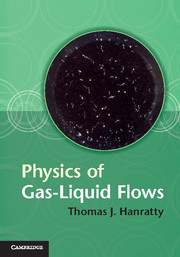Refine search
Actions for selected content:
8125 results in Fluid dynamics and solid mechanics
3 - Geometric wave theory
-
- Book:
- Waves and Mean Flows
- Published online:
- 05 April 2014
- Print publication:
- 06 March 2014, pp 40-55
-
- Chapter
- Export citation
Index
-
- Book:
- Waves and Mean Flows
- Published online:
- 05 April 2014
- Print publication:
- 06 March 2014, pp 358-360
-
- Chapter
- Export citation
12 - A framework for local interactions
-
- Book:
- Waves and Mean Flows
- Published online:
- 05 April 2014
- Print publication:
- 06 March 2014, pp 277-305
-
- Chapter
- Export citation
ANZ VOLUME 55 ISSUE 1 COVER AND BACK MATTER
-
- Journal:
- The ANZIAM Journal / Volume 55 / Issue 1 / July 2013
- Published online by Cambridge University Press:
- 17 December 2013, pp. b1-b6
-
- Article
-
- You have access
- Export citation
ANZ VOLUME 55 ISSUE 1 COVER AND FRONT MATTER
-
- Journal:
- The ANZIAM Journal / Volume 55 / Issue 1 / July 2013
- Published online by Cambridge University Press:
- 17 December 2013, pp. f1-f2
-
- Article
-
- You have access
- Export citation
A NOTE ON TRAVELLING WAVES IN COMPETITIVE REACTION SYSTEMS
- Part of
-
- Journal:
- The ANZIAM Journal / Volume 55 / Issue 1 / July 2013
- Published online by Cambridge University Press:
- 26 November 2013, pp. 1-13
-
- Article
-
- You have access
- Export citation
ON THE EXISTENCE OF CHAOTIC BEHAVIOUR IN PURE AND SIMPLE MICROBIAL COMPETITION: THE ROLE OF CONTOIS KINETICS
- Part of
-
- Journal:
- The ANZIAM Journal / Volume 55 / Issue 2 / October 2013
- Published online by Cambridge University Press:
- 21 November 2013, pp. 162-174
-
- Article
-
- You have access
- Export citation
A NEW FORMULA FOR ADOMIAN POLYNOMIALS AND THE ANALYSIS OF ITS TRUNCATED SERIES SOLUTION FOR FRACTIONAL NON-DIFFERENTIABLE INITIAL VALUE PROBLEMS
- Part of
-
- Journal:
- The ANZIAM Journal / Volume 55 / Issue 1 / July 2013
- Published online by Cambridge University Press:
- 20 November 2013, pp. 69-92
-
- Article
-
- You have access
- Export citation

Physics of Gas-Liquid Flows
-
- Published online:
- 05 November 2013
- Print publication:
- 31 October 2013
5 - Stratified flow
-
- Book:
- Physics of Gas-Liquid Flows
- Published online:
- 05 November 2013
- Print publication:
- 31 October 2013, pp 94-110
-
- Chapter
- Export citation
12 - Horizontal annular flow
-
- Book:
- Physics of Gas-Liquid Flows
- Published online:
- 05 November 2013
- Print publication:
- 31 October 2013, pp 292-330
-
- Chapter
- Export citation
4 - Inviscid waves
-
- Book:
- Physics of Gas-Liquid Flows
- Published online:
- 05 November 2013
- Print publication:
- 31 October 2013, pp 71-93
-
- Chapter
- Export citation
10 - Particle dispersion and deposition
-
- Book:
- Physics of Gas-Liquid Flows
- Published online:
- 05 November 2013
- Print publication:
- 31 October 2013, pp 232-267
-
- Chapter
- Export citation
8 - Bubble dynamics
-
- Book:
- Physics of Gas-Liquid Flows
- Published online:
- 05 November 2013
- Print publication:
- 31 October 2013, pp 173-201
-
- Chapter
- Export citation
2 - Flow regimes
-
- Book:
- Physics of Gas-Liquid Flows
- Published online:
- 05 November 2013
- Print publication:
- 31 October 2013, pp 27-57
-
- Chapter
- Export citation
Contents
-
- Book:
- Physics of Gas-Liquid Flows
- Published online:
- 05 November 2013
- Print publication:
- 31 October 2013, pp v-xii
-
- Chapter
- Export citation
9 - Horizontal slug flow
-
- Book:
- Physics of Gas-Liquid Flows
- Published online:
- 05 November 2013
- Print publication:
- 31 October 2013, pp 202-231
-
- Chapter
- Export citation
Index
-
- Book:
- Physics of Gas-Liquid Flows
- Published online:
- 05 November 2013
- Print publication:
- 31 October 2013, pp 331-333
-
- Chapter
- Export citation
11 - Vertical annular flow
-
- Book:
- Physics of Gas-Liquid Flows
- Published online:
- 05 November 2013
- Print publication:
- 31 October 2013, pp 268-291
-
- Chapter
- Export citation
Frontmatter
-
- Book:
- Physics of Gas-Liquid Flows
- Published online:
- 05 November 2013
- Print publication:
- 31 October 2013, pp i-iv
-
- Chapter
- Export citation
